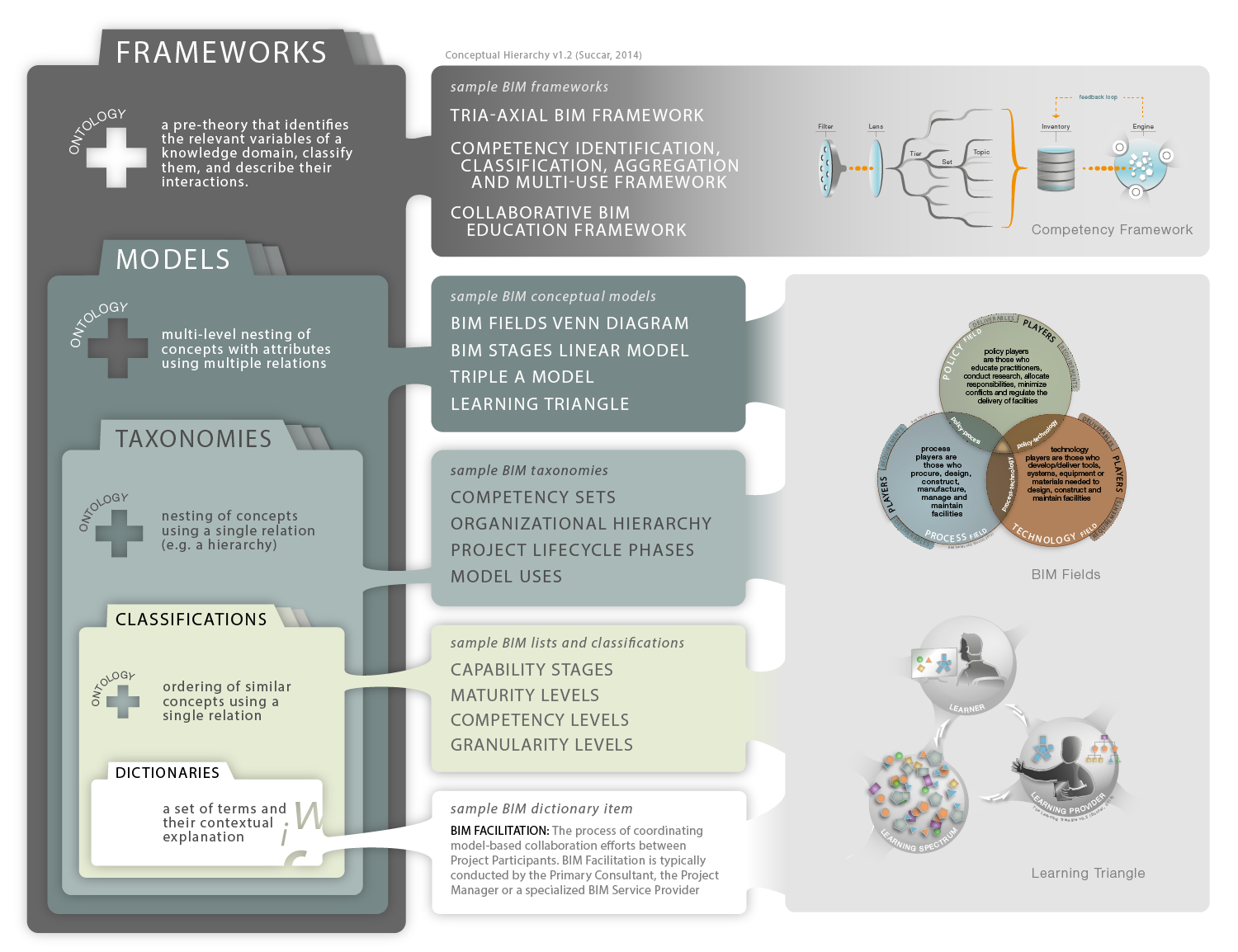
This numbered Frameworks Page covers a single Visual Knowledge Model (VKM). Refer to Tags at the bottom for content classification and source publication if any. The page may be updated to connect with newer Frameworks Pages. The number is for pages, not for content.
Published on July 29, 2014 | Last Updated on September 20, 2025

Conceptual Hierarchy (click to enlarge)
The BIM framework is composed of several interrelated conceptual constructs: models, taxonomies, classifications and dictionaries. A common conceptual ontology connects all conceptual constructs and makes explicit the relationship between them. Below is a generic description of the depicted conceptual parts:
Frameworks show “the gestalt, the structure, the anatomy or the morphology of a field of knowledge or the links between seemingly disparate fields or sub-disciplines” (Reisman, 1994, p. 92).
Models (conceptual models) are simplified representations and abstractions of the “enormous richness of this world” (Ritter, 2010, p. 360) (Lave & March, 1993).
Taxonomies are an efficient and effective way to organize and consolidate knowledge (Reisman, 2005) (Hedden, 2010). A well-structured taxonomy allows “the meaningful clustering of experience” (Kwasnik, 1999, p. 24).
Classifications are the “meaningful clustering of experience” (Kwasnik, 1999, p. 24) and “lies at the heart of every scientific field” (Lohse, Biolsi, Walker, & Rueter, 1994, p. 36). Classification is also a heuristic tool useful during the formative stages of discovery, analysis and theorizing (Davies, 1989).
Dictionaries constitute a web of meaning (Cristea, 2004) connecting terms to each other and to other knowledge bases.
Cite as: BIMe Initiative (2025), '27. Conceptual Hierarchy', https://bimexcellence.org/frameworks/conceptual-hierarchy/. First published 29 July 2014. Viewed 10 January 2026